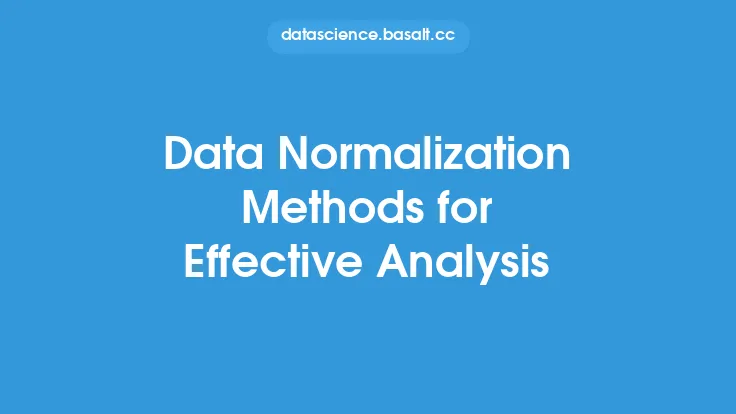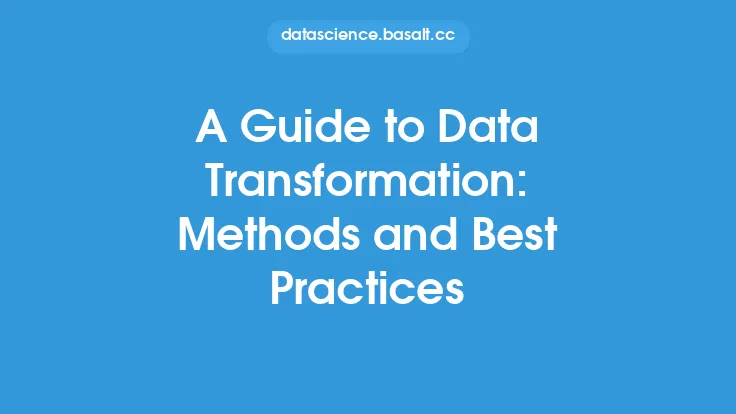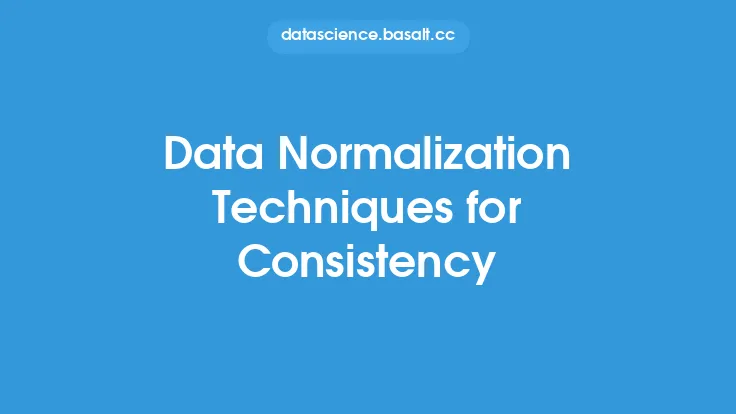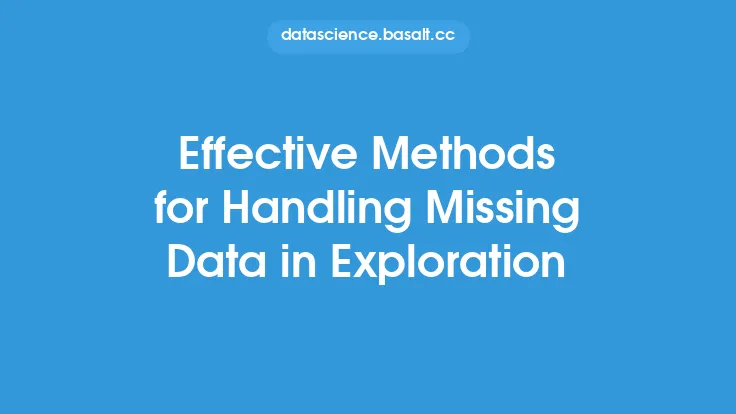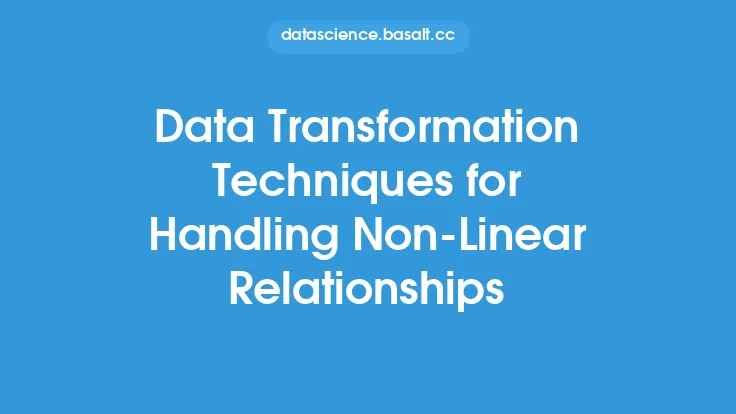Data normalization is a crucial step in data preprocessing that involves transforming raw data into a suitable format for analysis or modeling. One of the primary goals of data normalization is to handle outliers and noisy data, which can significantly impact the accuracy and reliability of machine learning models. Outliers are data points that lie far away from the rest of the data, while noisy data refers to random fluctuations or errors in the data. In this article, we will delve into the various data normalization methods that can be used to handle outliers and noisy data.
Introduction to Outliers and Noisy Data
Outliers and noisy data can arise from various sources, including measurement errors, data entry errors, or inherent variability in the data. Outliers can be either univariate or multivariate, depending on whether they occur in a single feature or multiple features. Noisy data, on the other hand, can be either additive or multiplicative, depending on whether the noise is added to or multiplied with the true signal. The presence of outliers and noisy data can lead to biased or inaccurate models, which can have significant consequences in real-world applications.
Types of Data Normalization Methods
There are several data normalization methods that can be used to handle outliers and noisy data. These methods can be broadly categorized into two types: parametric and non-parametric methods. Parametric methods assume a specific distribution for the data, while non-parametric methods do not make any assumptions about the underlying distribution.
Parametric Methods
Parametric methods include techniques such as z-score normalization, modified z-score normalization, and winsorization. Z-score normalization involves subtracting the mean and dividing by the standard deviation for each feature, which helps to reduce the impact of outliers. Modified z-score normalization is a variation of z-score normalization that uses the median and median absolute deviation instead of the mean and standard deviation. Winsorization involves replacing a portion of the data at the extremes with a value closer to the median, which helps to reduce the impact of outliers.
Non-Parametric Methods
Non-parametric methods include techniques such as median normalization, percentile normalization, and density-based normalization. Median normalization involves subtracting the median and dividing by the interquartile range for each feature, which helps to reduce the impact of outliers. Percentile normalization involves subtracting the percentile and dividing by the range between percentiles for each feature, which helps to reduce the impact of outliers. Density-based normalization involves using density estimates to identify and remove outliers, which helps to reduce the impact of noisy data.
Robust Data Normalization Methods
Robust data normalization methods are designed to be resistant to outliers and noisy data. These methods include techniques such as robust z-score normalization, robust modified z-score normalization, and robust winsorization. Robust z-score normalization involves using the median and median absolute deviation instead of the mean and standard deviation, which helps to reduce the impact of outliers. Robust modified z-score normalization involves using a robust estimate of the median and median absolute deviation, which helps to reduce the impact of outliers. Robust winsorization involves using a robust estimate of the median and interquartile range, which helps to reduce the impact of outliers.
Data Transformation Methods
Data transformation methods can be used in conjunction with data normalization methods to handle outliers and noisy data. These methods include techniques such as logarithmic transformation, square root transformation, and inverse transformation. Logarithmic transformation involves taking the logarithm of the data, which helps to reduce the impact of outliers. Square root transformation involves taking the square root of the data, which helps to reduce the impact of outliers. Inverse transformation involves taking the inverse of the data, which helps to reduce the impact of outliers.
Handling Missing Values
Missing values can also impact the accuracy and reliability of machine learning models. There are several methods for handling missing values, including mean imputation, median imputation, and imputation using regression models. Mean imputation involves replacing missing values with the mean of the feature, which can help to reduce the impact of missing values. Median imputation involves replacing missing values with the median of the feature, which can help to reduce the impact of missing values. Imputation using regression models involves using a regression model to predict the missing values, which can help to reduce the impact of missing values.
Conclusion
Data normalization is a crucial step in data preprocessing that involves transforming raw data into a suitable format for analysis or modeling. Outliers and noisy data can significantly impact the accuracy and reliability of machine learning models, and various data normalization methods can be used to handle these issues. Parametric and non-parametric methods, robust data normalization methods, data transformation methods, and handling missing values are all important techniques for data normalization. By using these methods, data scientists and analysts can help to ensure that their models are accurate, reliable, and robust, which can have significant consequences in real-world applications.
